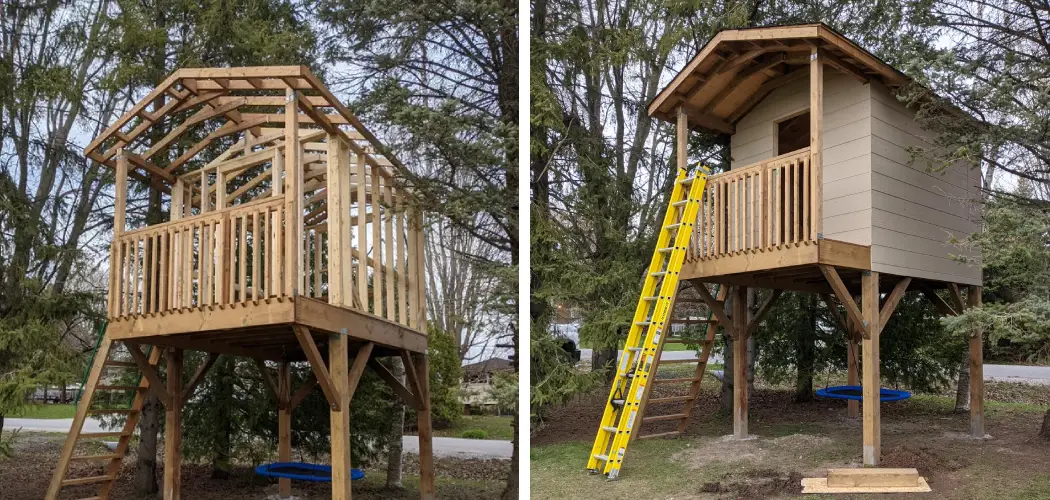Do you want to build a treehouse but don’t have access to a tree? Building a treehouse without a tree is possible and can be done in several ways. You may even find that the lack of trees makes it easier to design your dream structure!
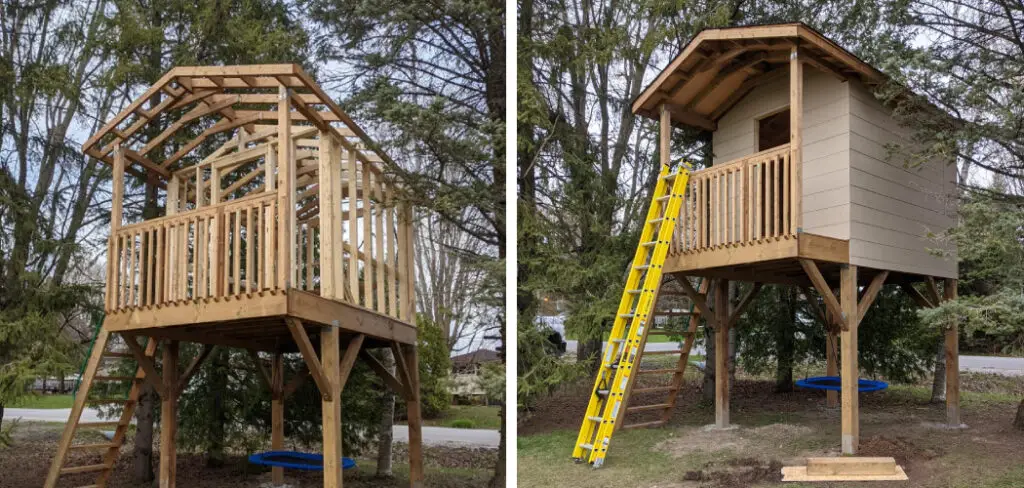
With some creativity, an understanding of basic construction principles, and the right materials and tools, you can easily construct your own unique ‘tree-less’ house. In this article, we will discuss how to build a safe, sturdy, and aesthetically pleasing treehouse without having access to any kind of natural or man-made support structures.
We will go over step-by-step instructions on how to build a treehouse without a tree and what materials are needed for building such structures, as well as provide tips on making sure the final product is safe for everyone who uses it.
Additionally, there are also ideas on incorporating elements into the design which make it look like there was an actual tree present at one point in time, so if you’re ready to get started creating your very own backyard oasis – read on!
Can You Build Treehouse Without a Tree?
Yes, you can build a treehouse without a tree! This is possible by using man-made support structures such as posts, poles, and beams. These will provide the same amount of stability that trees do when it comes to constructing treehouses.
You need to make sure that the support structure is strong enough to bear the weight of the treehouse and its occupants. Additionally, you should pay attention to local building codes when it comes to constructing a treehouse without a tree, as there may be specific requirements for safety measures such as railings or other features.
What Materials Do You Need?
You will need basic carpentry skills and materials to build your treehouse without a tree. Materials you may need include lumber, plywood, nails, screws, bolts, washers, and nuts. In addition to these materials, you will also need tools such as a saw, hammer, drill, and screwdriver.
You should also have access to a level and tape measure for measuring and making sure the structure is stable.
10 Steps on How to Build a Treehouse Without a Tree
Step 1: Decide the Location
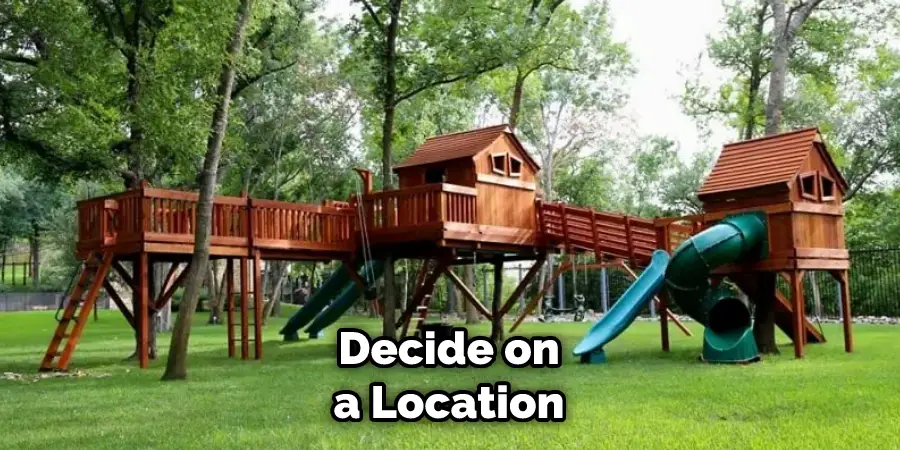
Decide on a location for your treehouse. It should be easy to access, and you should consider factors such as sunlight, wind, and protection from rain. Keeping all these elements in mind will ensure that you build a safe, comfortable treehouse.
Step 2: Create a Design
Create a sketch or drawing of the treehouse structure and make sure to measure all its dimensions accurately. This will help you determine how many materials and tools you will need for the project. Additionally, it is always best to consult an architect or engineer when it comes to structural safety.
Step 3: Prepare the Ground
Clear away any rocks, roots, or other debris from the area you plan on building your treehouse. Level the ground and make sure it is even throughout the area. You may also want to consider laying down a thick layer of gravel or sand to provide a solid foundation.
Step 4: Construct the Foundation
You will need to construct a foundation for your treehouse in order to support the structure. This can be done by either pouring concrete footings or using timber posts as supports. Make sure that whatever method you choose is strong and secure enough to hold up the entire weight of your treehouse.
Step 5: Build the Frame
Once your foundation is in place, you can begin constructing the frame of your treehouse. This will include attaching beams and joists to create the desired shape of your structure. Make sure to use galvanized nails or screws for all connections to ensure long-term durability.
Step 6: Add Walls and Roof
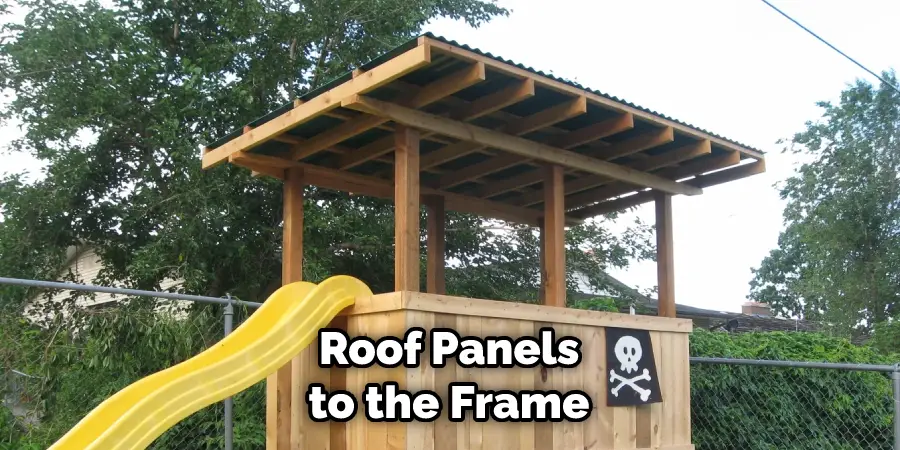
Attach the walls and roof panels to the frame of your treehouse. This can be done either by using plywood or other material such as metal sheets or shingles. You should also make sure that the connections are strong enough to withstand any extreme weather conditions.
Step 7: Install Windows and Doors
Install windows and doors into the walls of the treehouse. You should make sure to get materials that are water-resistant and strong enough to withstand any high winds or snowfall.
Step 8: Add Finishing Touches
Once your walls, roof, windows, and doors are installed, you can begin adding finishing touches to make your treehouse look more like a traditional one. This includes adding decorative elements such as trim, shutters, and paint in order to give the structure an aesthetically pleasing look.
Step 9: Install Safety Features
Installing safety features should be your next step before you can begin using your treehouse. Make sure that railings are placed around any areas with a potential for falls and that the stairs and ladders used to access it are strong and secure.
Step 10: Enjoy Your Treehouse
Once all the safety features have been installed, you can now enjoy your treehouse without a tree! With some basic carpentry skills and the right materials, you can have a unique and fun place to relax or host parties in no time. With a little bit of effort, you can create the perfect treehouse without having to worry about finding a tall enough tree!
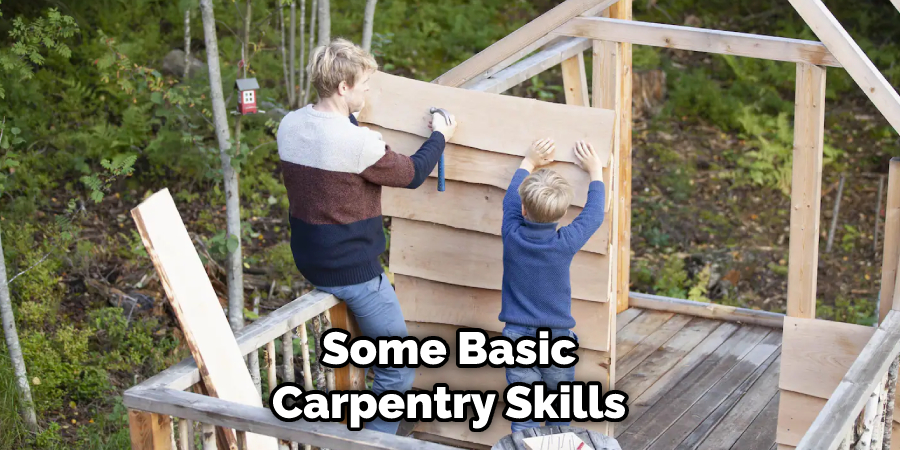
Once your treehouse is complete, remember to take good care of it and keep it maintained through regular inspections. This will help ensure that it is safe for use and will last you years to come. Enjoy your new treehouse without a tree!
8 Safety Precautions to Follow
- Check with local authorities. Before building a treehouse, check with your local authorities to ensure that you are allowed to build one in your area. It’s important to follow their regulations and guidelines.
- Use proper materials. When building a treehouse, use wood that is both rot- and insect-resistant, such as treated lumber or cedar. Make sure the size of the boards is appropriate for the weight they will have to support. Also, make sure nails, screws, lag bolts, and other fastening devices are in good condition.
- Have a solid foundation. A concrete or wooden platform is necessary for the treehouse’s foundation, especially if you are building your treehouse on uneven ground. This ensures that the structure is level and stable and able to withstand heavy winds and rainstorms.
- Make sure it’s secure. Secure the treehouse to the platform using metal brackets if needed, as this will help prevent it from toppling over. Otherwise, use lag bolts or large nails to attach it securely.
- Use non-slip surfaces. Install decks with non-slip surfaces, such as treated lumber or other materials that are designed for outdoor use. This will help ensure the safety of children and adults who use the treehouse.
- Ensure handrails, guard rails, and bridges are secure. Handrails and guardrails should be firmly attached to the treehouse so that it is safe for people to access. If you’re using bridges to reach the treehouse, make sure they are securely fastened.
- Install a lightning rod or other safety measures. In areas that experience severe storms, it’s important to install a lightning rod to protect the treehouse from lightning strikes. You may also want to consider other safety measures, such as installing smoke detectors and fire extinguishers.
- Have an emergency exit plan in place. It’s important to have an emergency exit plan in place in case of an emergency such as a fire. Make sure everyone who uses the treehouse knows what to do in case of an emergency.
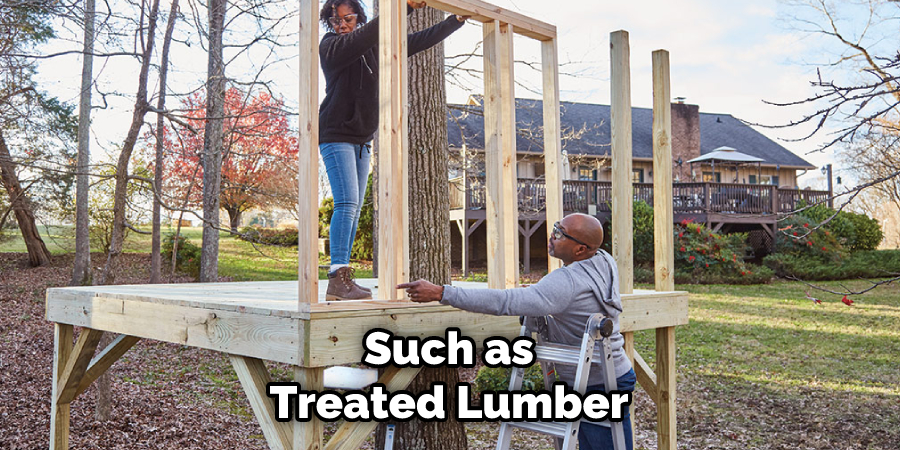
By following these safety precautions on how to build a treehouse without a tree, you can ensure that it is safe and secure for all who use it. Building a treehouse can be an enjoyable project for the whole family, but safety must come first. With the proper precautions in place, you can be sure that your treehouse will provide years of fun and enjoyment for all who use it.
7 Care Tips for a Treehouse
- Make sure to consider the type of environment your treehouse is in. Depending on where you are building, you may need to bring extra materials such as waterproofing or insulation. It will help protect your treehouse from the elements.
- Use a heavy-duty frame for the foundation of your treehouse. This will ensure that it is able to handle any weight and movement caused by wind or children playing in it. Also, make sure to use durable materials when constructing the rest of your treehouse.
- Clean the area around your treehouse. Removing dead leaves, debris, and other objects will help prevent any pests or animals from entering your treehouse. Cleaning regularly will also help protect your treehouse from the elements.
- Install proper safety features for your treehouse. Make sure to include railings, guardrails, and a ladder or stairs that can support any weight it may be put under. Safety features will help ensure your treehouse is safe for you and anyone else who uses it.
- Check the area around your treehouse regularly for any signs of wear or damage. If something does break, make sure to replace or repair it as soon as possible to avoid any further damage.
- Don’t forget about maintenance! The area around your treehouse should be kept clean and well-maintained. This will help prevent any rot or mold from growing on the surrounding surfaces and causing damage to your treehouse.
- Consider adding a roof to your treehouse for extra protection from the weather. A tarp or plastic sheeting is often used on top of the frame to provide some shade and protection from rain or snow. Adding a roof will also help protect the inside of your treehouse from any water damage.
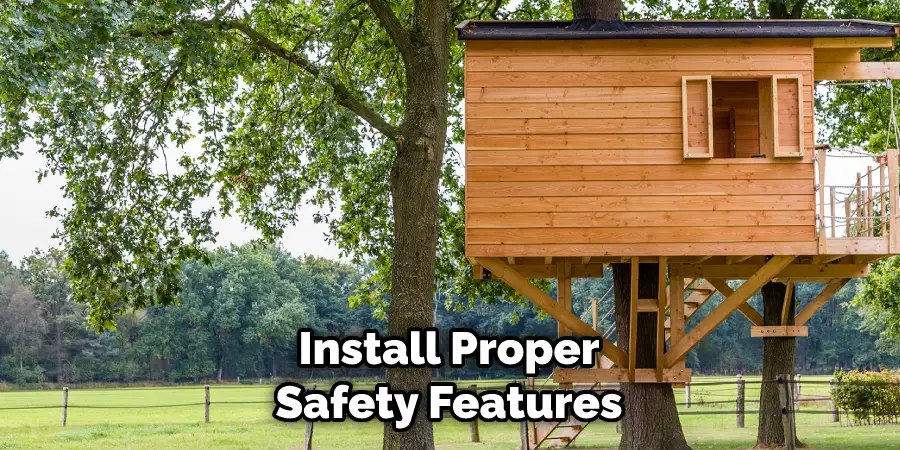
With these tips on how to build a treehouse without a tree in mind, you can easily build a safe, sturdy treehouse without the need for an actual tree! With the right materials and some planning, your treehouse will be a safe and enjoyable space for years to come.
Frequently Asked Questions
What is the Best Wood for Building a Treehouse?
The best wood for building a treehouse is pressure-treated lumber. Pressure-treated lumber is capable of handling the elements, pests, and weight of your structure. It’s also more durable than regular wood and can last longer without rotting.
Additionally, it is much safer since it has been treated to resist rot and decay. If possible, opt for a higher grade of pressure-treated lumber to ensure your structure is as safe and secure as possible.
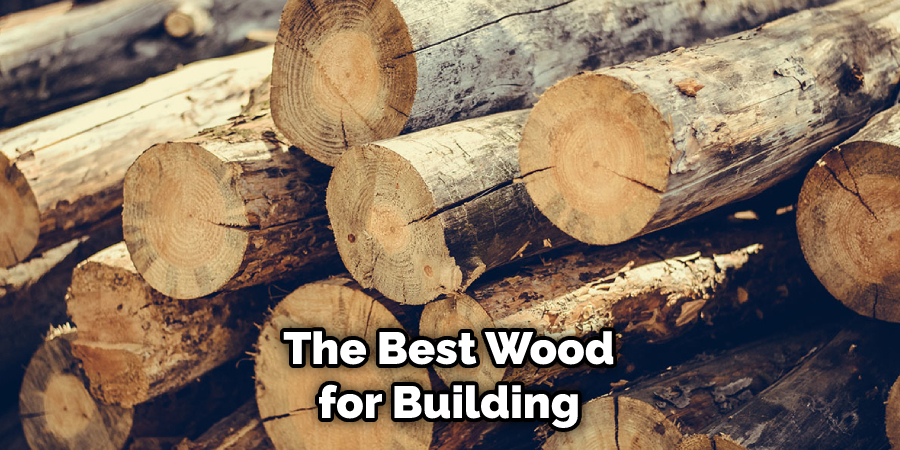
How Long Will It Take to Finish the Project?
It can take anywhere from several days to several weeks, depending on the size and complexity of your project. If you have experience in carpentry or building structures, you may be able to complete the project faster than someone who is new to the task.
Additionally, if you’re working with a partner or team, it can reduce the time necessary to complete the project. Keep in mind that building a safe and sturdy structure requires precision, so it’s important to take your time and do the work right.
Conclusion
Building a treehouse without a tree can be an enjoyable and rewarding experience for the whole family. It’s important to take all necessary safety precautions before starting construction, such as checking with local authorities, using proper materials, and securing the foundation of your structure.
Additionally, it’s prudent to install non-slip surfaces on decks or bridges that are used to access the treehouse; handrails and guard rails should also be firmly attached so they remain secure in case of strong winds or storms.
If you live in an area prone to lightning strikes, consider installing a lightning rod for added protection.
And lastly, make sure everyone who uses the treehouse is familiar with an emergency exit plan just in case something unexpected happens while inside the structure. By following these steps on how to build a treehouse without a tree when building your own DIY project, you will ensure years of fun and enjoyment from your no-tree tree house!

